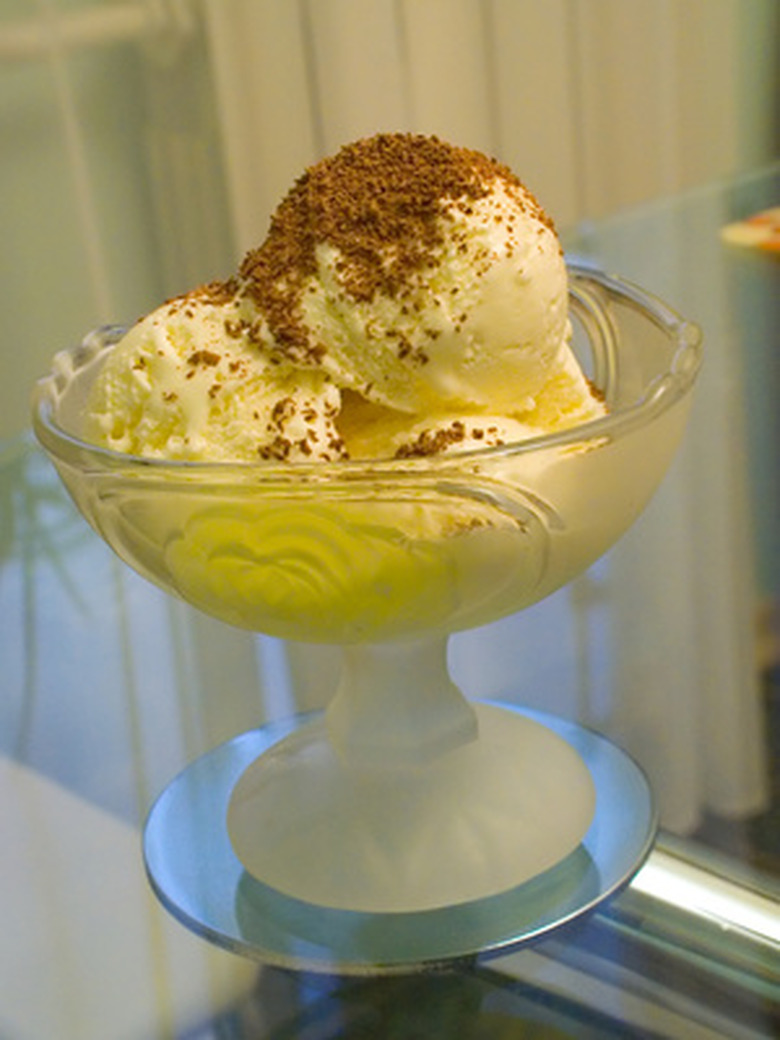The Effects Of Salt On Ice Cubes
Putting salt on ice cubes makes them colder. This may seem strange, but ice cream makers have known this for as long as they have plied their trade. If you've never had ice cream made the old-fashioned way, with salt, you're missing out on a treat. When you make ice cubes colder by putting salt on them, you have to be careful not to hold them in your hands because they can give your skin burns.
The truth is, salt doesn't actually lower the temperature of the ice cubes, it just lowers their freezing point, which is the same as saying it lowers their melting point. When salt is around, ice cubes have to be colder to be solid, and they will melt at a temperature lower than the freezing point of pure water. That's why people use salt to melt ice on streets and sidewalks the world over.
Try This Salt and Ice Experiment
Try This Salt and Ice Experiment
If you have a temperature-controlled cold box or freezer, you can try a simple experiment that illustrates the effect of salt on water and ice. Fill two plastic cups with equal amounts of water, pour a generous amount of table salt into one of them and stir until it's all dissolved. Put the cups in the freezer, set the temperature to 32 degrees Fahrenheit (0 Celsius) and leave them overnight.
When you come back in the morning, the cup with pure water will have frozen but not the cup with salt. Try lowering the temperature setting incrementally and checking back after several hours to see if the salt water is ice. If not, lower the temperature more until it freezes. If you wanted to, you could use the freezing temperature and the water volume to tell you exactly how much salt you put in.
The Salt and Ice Reaction
The Salt and Ice Reaction
You can't actually call the interaction of salt and ice a reaction because no chemical change takes place, but something definitely happens. The ice starts to melt, but it feels colder. This paradox occurs because two different things happen inside and on the ice.
Salt Makes Ice Melt at a Lower Temperature
Salt Makes Ice Melt at a Lower Temperature
Salt is an ionic compound composed of positive sodium (Na) and negative chlorine (Cl) ions, and water molecules are polar, each having a weak positive charge on one side and a negative one on the other.
When salt and water come in contact, each side of the water molecule attracts one of the salt ions, the salt molecule breaks apart, and the water molecules surround the ions. This process of dissolving fills the water with a solute, and because it's there, the water molecules have more freedom of movement. The water stays in a liquid state at a lower temperature.
Only when the ambient temperature drops below the new freezing point will the ice start to melt, and that depends on the salt concentration. That's why rock salt melts road ice in a jiffy when the temperature outside is near freezing, or just below it. It doesn't work well when the temperature drops below 15 F (-9 C), and it won't work at all if the temperature reaches 0 F (-18 C)
Salt Makes Ice Feel Colder
Salt Makes Ice Feel Colder
On the surface of a pure-water ice cube at the melting point, some water molecules are still frozen to each other while some are enjoying the relative freedom of being in the liquid state, and there is a balance between them.
When you add salt, it changes the balance, and more of the molecules go into the liquid state and drip away, while the ones in the solid state have to be at a lower temperature to stay solid. What's left of the ice cube, after the water melts off, is colder than a regular ice cube.
Cite This Article
MLA
Deziel, Chris. "The Effects Of Salt On Ice Cubes" sciencing.com, https://www.sciencing.com/effects-salt-ice-cubes-7903302/. 31 March 2020.
APA
Deziel, Chris. (2020, March 31). The Effects Of Salt On Ice Cubes. sciencing.com. Retrieved from https://www.sciencing.com/effects-salt-ice-cubes-7903302/
Chicago
Deziel, Chris. The Effects Of Salt On Ice Cubes last modified March 24, 2022. https://www.sciencing.com/effects-salt-ice-cubes-7903302/
